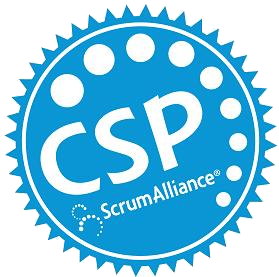[youtube http://www.youtube.com/watch?v=fhCks3bvTdA]
BUFD = Big Upfront Design = C’MON MAN!
Its been 12 years since the Agile Manifesto was signed and we are now living in a world where Continuous Deployment and HDD(Hypothesis Driven development) are driving rapid, profitable, product development. It seems Lean|Agile methods should be peaking mainstream adoption. So why is BUFD still prevalent? Why do I feel compelled to say “C‘MON MAN?”
 Simply put, I think its a case where the wrong people are in the driver’s seat. Often, we see IT driving product development instead of the Business. The larger the IT organization or project, the more “steering wheel time” IT seems to have. So what happens when you put a bunch of engineers in charge of product development? You get BUFD. That’s just how engineers think. I know…I am one!
Simply put, I think its a case where the wrong people are in the driver’s seat. Often, we see IT driving product development instead of the Business. The larger the IT organization or project, the more “steering wheel time” IT seems to have. So what happens when you put a bunch of engineers in charge of product development? You get BUFD. That’s just how engineers think. I know…I am one!
So how did we get here?
After all Agile Manifesto principle #4 clearly states business and IT should work together daily. So aren’t they? Well yes…kind of! We usually see business folks involved with product development at planning, demo’s, and grooming sessions. However, they aren’t driving it. Why not? I think its largely due to the fact that they don’t know how!
Agile practices organically grew out of pain from development teams. Naturally, mature Agile practices consolidated on the delivery end of product development where development teams play. I think this has put product development organizations in a situation where they have relatively immature discovery practices as compared their delivery practices.
In layman’s terms organizations need better business practices to discover what IT should be working on and when!
In the next blog we will explore how we can put the business in the drivers seat to drive value and steer away from BUFD.


 A funny thing happened while I was writing our
A funny thing happened while I was writing our  The worst of all was that the number of unmatched socks constantly floated around 25-30 pairs. This necessitated the need for a dedicated unmatched sock sorting bag to collect the large inventory of sock “defects.” Sound like a defect backlog? 😉
The worst of all was that the number of unmatched socks constantly floated around 25-30 pairs. This necessitated the need for a dedicated unmatched sock sorting bag to collect the large inventory of sock “defects.” Sound like a defect backlog? 😉 My wife and I were traveling home last week from visiting family over Christmas and we started the usual post Christmas conversation. It always starts with ranting about eating too much(see cat) of my mother inlaw’s Louisiana cooking and an action plan to work it off. Inevitably our retrospective conversation inspires other home improvement topics like organizing clutter and managing the continuous flow of laundry demand.
My wife and I were traveling home last week from visiting family over Christmas and we started the usual post Christmas conversation. It always starts with ranting about eating too much(see cat) of my mother inlaw’s Louisiana cooking and an action plan to work it off. Inevitably our retrospective conversation inspires other home improvement topics like organizing clutter and managing the continuous flow of laundry demand.






